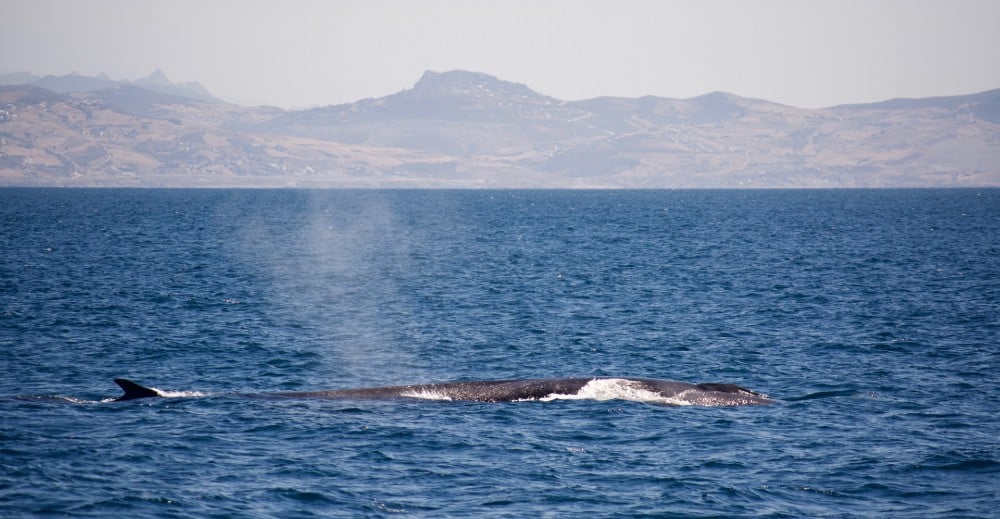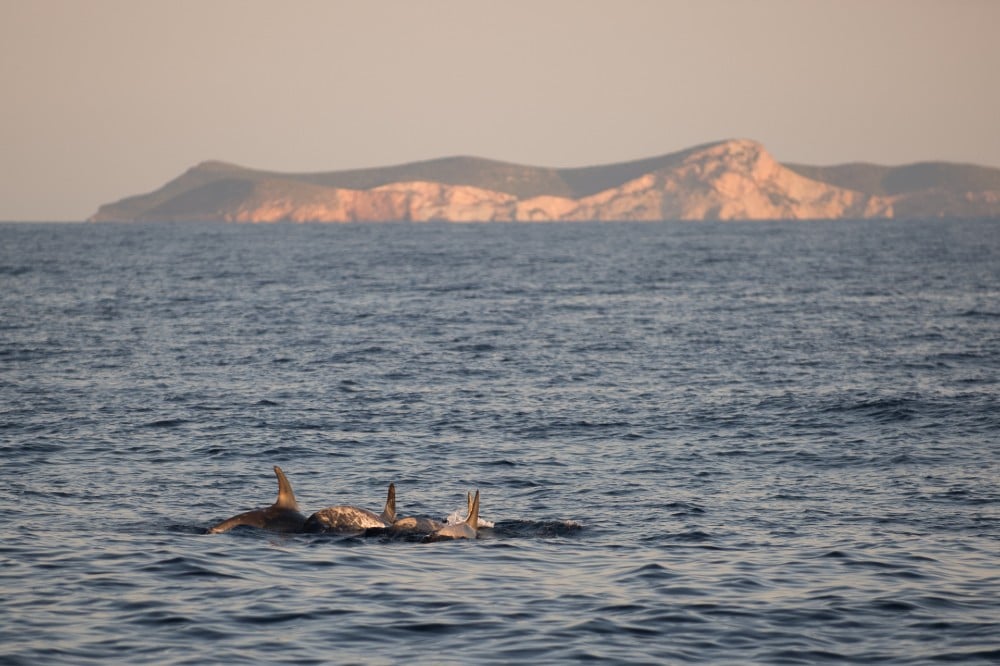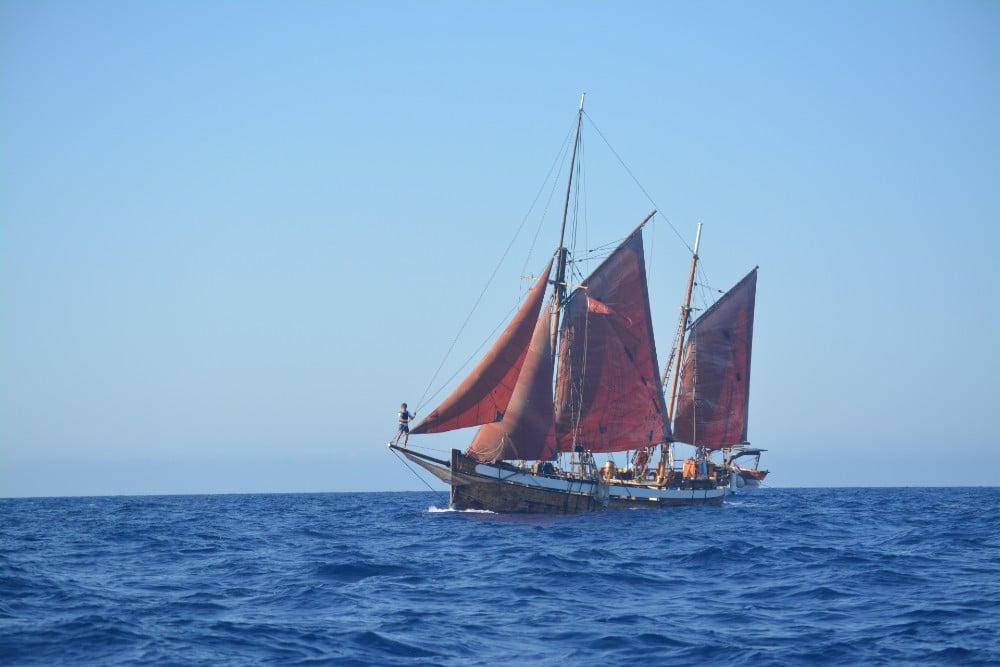But is the lockdown in Spain really having such a huge affect on Spain's marine wildlife? The Local gets the lowdown from marine biologist Alexander Sánchez Jones.
During this COVID-19 outbreak amid all the bad news and chaos we have nevertheless enjoyed many videos of wildlife getting bolder and venturing into Homo sapiens territory, giving us the impression that nature is “re-conquering” its rightful place in our absence. It’s definitely entertaining, but is this a correct interpretation of what’s been going on?
I can only “speak” for the sea, which is my study area, and my experience during lockdown reading and watching the news began quite pleasantly (remember the crystal-clear canals of Venice), but I soon became somewhat frustrated as stories became more sensationalist over time.
All of a sudden there were dolphins in these Venice canals, for example, a news piece that I quickly looked up and found wasn’t true. Then there was a whale in a harbour in Spain, which wasn’t true either. And more stories like this have been popping up every few days, giving the impression that wildlife is indeed taking back what is theirs.
Last week however, was the last straw: an article by El País titled "La ausencia de ruido humano atrae a ballenas y delfines a las costas españolas” (The absence of human noise attracts whales and dolphins to the Spanish coast) was published, along with a video of a couple of fin whales travelling past the Rock of Gibraltar.
La ausencia del ruido humano atrae a ballenas y delfines a las costas españolas https://t.co/ADlQRjjl2q vía @el_pais
— JOSE MUÑOZ ZAVALA (@MUOZZAVALA) April 27, 2020
The article was picked up by many media outlets across Spain which repeated the same story.
It is frustrating enough to be a marine researcher doing lockdown in the mountains (even though the area is the beautiful Alpujarra near Granada), but more so when you also have to read inaccurate articles like this one. I had to set the record straight… so here I am!
There is a book that the Spanish Ministry of the Environment published in 2008 titled 'The Seas of Spain' which contains a whole chapter on Cetaceans, that is whales, dolphins and porpoises. “Spanish people” begins the chapter’s author Ricardo Sagarminaga (who I have the privilege of working with in Save The Med Foundation), “typically associate whales and dolphins with the cold waters of the Antarctic or the tropical waters of the Bahamas or Polynesia-which only shows how the Spanish have typically lived with their back to the sea (as they say).”
It isn’t common knowledge even among the locals but a whopping 28 species of cetacean occur in Spanish waters, including the second largest animal ever to exist: the fin whale.
Yes, the same whales that El País say are “being attracted to the Spanish coast” during lockdown actually migrate in and out of the Straight of Gibraltar every year.

A fin whale passing through the Strait of Gibraltar in 2016. Photo: Alexander Sánchez Jones
Their route into the Mediterranean takes them up the eastern coast of Spain, often close enough to the shore to be spotted from land, and all the way to the Pelagos Sanctuary, a marine protected area of 87,500 sq. km located between France, Italy and Mónaco (the waters surrounding the island of Corsica). Here, they feed during the summer due to the abundance of krill, as they have been doing for millennia.
Other species in Spanish waters include the bottlenose dolphin, pilot whales, striped dolphins, common dolphins (which despite their name are becoming quite rare in the Mediterranean due to bycatch-getting caught in fishing gear), sperm whales, and many more.
READ ALSO:
- VIDEO: Drone captures incredible footage of whales off Barcelona
- Spain plans super 'whale highway' to help safe migration through Med
Orca also feed off bluefin tuna in the Strait of Gibraltar, and the Canary Islands are excellent habitat for a subgroup of cetaceans known as “beaked whales”. The Balearic Islands is a great area for cetaceans also, and are home to the little-known Risso’s dolphins, which is the species that I have been focused on since mid-2018.

Risso's dolphins swim in the Cabrera Archipelago National Park, to the south of Mallorca in 2018 (photo Alnitak Research Institute)
But you may ask: even though these animals were always in these waters, surely our global quarantine will have some effect on marine wildlife? We have, after all, seen wild boar and deer strutting around towns and even amusing videos of monkeys enjoying swimming pools. So why not whales and dolphins too? This question has no easy answer.
Along the southern coast of Spain from Almería to Málaga I have seen various delightful videos taken by members of the public of dolphins just off shore, but it’s way more likely that during lockdown there are simply more human eyes watching the water and not more dolphins than usual.
One thing we must bear in mind is that during lockdown the seas aren’t as empty as our streets. Pleasure yachts and sports fishing boats may be moored in ports and harbours, but commercial fishing and shipping are still doing business as usual.
Suggesting that whales and dolphins are somehow “returning” to Spain is nonsense.
The gentle giants have always been here. However, when we talk about their habits and behaviour, we can’t yet be sure. Any change in their daily lives is more likely to happen during the summer when there will indeed be less human activities than usual. There may be less whale watching boats, there may be less jet skiing (one would hope), less splashing in the shallows, less fiestas, and less, in short, of everything that the summer usually brings.
How this will affect whales and dolphins? Well, one scenario is that it may mean more of their prey close to shore. Beachgoers make water murkier, and the splashing scares fish away. But quieter and clearer waters may just change this, and where there is an abundance of prey, the predators won’t be far behind.
And how will we know if this happens? Well, hopefully our research can get back under way for these summer months and we can check it out ourselves!

The research ship Toftevaag. Photo: Alexander Sánchez Jones, Save the Med Foundation.
Being on the water observing wildlife such as whales and dolphins, but also sea birds, turtles and large fish such as tuna or sharks, may be able to give us clues as to if (and how) less tourism and pleasure activities affect marine ecosystems.
If all goes well, our 110-year old ship Toftevaag will once again take crew and volunteers out into the open waters of the Mediterranean as it has been doing for over 30 years, bringing people together for the conservation of the Mediterranean Sea and its inhabitants.
How we humans return to our normal lives after COVID-19, and how this will affect these amazing animals in the long-term, remains a mystery for now. It is one more question for us to try to answer, and one more reason (not that we needed one) to get back out to Sea and in their company. In the meantime, hopefully we will see more videos, but with less misleading headlines.
Whales and dolphins have always been here, and hopefully always will!
Alexander Sánchez Jones is a conservationist working with Save The Med Foundation & Equinac Marine Rescue. To find out more about the work they do, or to discover how to volunteer or join an expedition visit their website HERE.

Comments (1)